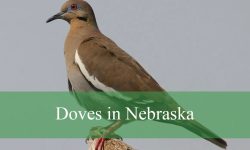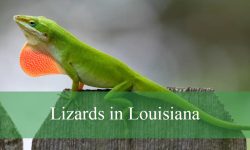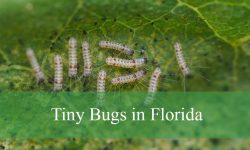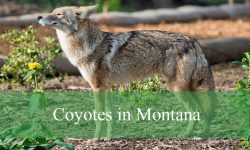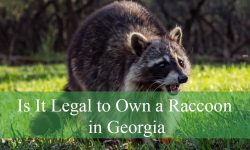Opossums are one of Florida’s most overlooked and misunderstood creatures. Many people pass them by without a second thought, yet these nocturnal marsupials are fascinating in their habits, survival strategies, and role in the ecosystem. From their unusual physical features to their surprising adaptability, Florida opossums are full of secrets that few have discovered.
Whether wandering through suburban neighborhoods, gliding silently through wetlands, or slipping through forests, opossums are master survivors. This guide will reveal everything you need to know about these remarkable animals, uncovering their hidden behaviors, identifying traits, and intriguing facts that make them true experts in survival.
Physical Characteristics of Florida Opossums

Florida opossums, commonly referred to as Virginia opossums (Didelphis virginiana), are medium-sized marsupials with several distinctive features. They possess a long, pointed snout and sharp, inquisitive eyes that give them excellent vision, especially at night. Their fur is typically grayish-white, though some individuals may appear darker depending on the season and environment.
One of their most unique traits is their prehensile tail. This long, scaly appendage acts as an additional limb, helping opossums balance in trees, carry nesting material, and occasionally grasp objects. Their ears are hairless and rounded, allowing for acute hearing, while their pink noses and opposable thumbs on their hind feet contribute to their dexterity.
In size, adult Florida opossums typically measure between 2 to 3 feet from nose to tail tip, and weigh between 4 to 14 pounds. Females are generally smaller than males but are just as resilient. Juvenile opossums, often called “pups,” are tiny at birth but develop quickly while riding in their mother’s pouch.
How to Identify an Opossum in Florida
Identifying an opossum is easier than many realize, but they are often mistaken for rats, cats, or even small raccoons due to their nocturnal habits and bushy surroundings. Key identifying features include their white or gray fur, long prehensile tail, and hairless, pink ears and noses.
In addition, Florida opossums have a unique gait, often moving with deliberate, slow steps on the ground but demonstrating surprising agility when climbing trees. Their sharp claws and flexible feet allow them to grip branches and forage in places many other animals cannot reach. At night, their reflective eyes may catch a flashlight, giving them an unmistakable glowing appearance.
Juveniles are particularly distinct when observed riding on their mother’s back. This behavior, combined with the opossum’s low, hissing call and occasional “playing dead” trick, makes them one of Florida’s most identifiable mammals when observed closely.
Behavior and Nocturnal Habits
Florida opossums are primarily nocturnal, emerging after sunset to forage and explore. They are solitary creatures, preferring to avoid conflict whenever possible, but they are highly adaptable and capable of thriving in both wild and urban environments.
One of the most remarkable behaviors of opossums is their defense mechanism known as “playing dead” or “thanatosis.” When threatened by predators, an opossum may fall to the ground, flop onto its side, and remain motionless with its mouth open and tongue protruding. This involuntary response can last from a few minutes to several hours, effectively deterring most would-be attackers.
Opossums are also excellent climbers, foraging in trees for fruits, insects, and small vertebrates. They rely heavily on their keen sense of smell and hearing to locate food in the dark. Despite their slow appearance, they are surprisingly fast when necessary, making them difficult targets for predators.
Diet and Feeding Habits
Opossums are omnivorous scavengers, which contributes to their success in a variety of Florida habitats. Their diet is highly versatile, including fruits, insects, small mammals, amphibians, birds, eggs, and even carrion. This adaptability ensures they can survive even in urban areas where natural food sources may be limited.
In suburban and rural neighborhoods, opossums are often seen scavenging from trash cans, bird feeders, or compost piles. Despite this opportunistic behavior, they are not aggressive and rarely pose a threat to humans or pets. Their feeding habits actually provide a valuable ecological service, as they help control insect populations and clean up decomposing organic matter.
Opossums are also known to eat venomous snakes, including rattlesnakes, showing a surprising immunity to certain types of venom. This ability allows them to take advantage of prey that many other predators avoid, giving them an ecological edge in Florida’s diverse ecosystems.
Habitat and Range in Florida
Opossums are highly adaptable and can thrive in a wide range of habitats across Florida. They are commonly found in forests, wetlands, marshes, suburban neighborhoods, and farmlands. Their flexibility allows them to make dens in hollow trees, abandoned burrows, under houses, or even in brush piles.
While primarily ground-dwelling, opossums are excellent climbers and often seek shelter in trees, particularly during harsh weather or to escape predators. They are highly mobile and can travel considerable distances each night in search of food, water, and suitable shelter.
Their presence in both rural and urban areas demonstrates their remarkable ability to coexist with humans. Florida’s warm climate and abundant resources provide an ideal environment for opossums, contributing to their widespread distribution across the state.
Reproduction and Lifespan
Opossums have a unique reproductive strategy among North American mammals. Females give birth to tiny, underdeveloped young after a gestation period of about 12 to 13 days. These neonates crawl into their mother’s pouch, where they continue to develop for several weeks. Once outside the pouch, they often ride on their mother’s back for protection until they are capable of independent survival.
A female opossum may produce one to two litters per year, each consisting of up to 13 pups, though survival rates vary due to predation and environmental factors. Most opossums live only 2 to 4 years in the wild, though their high reproductive rate ensures population stability.
Despite their short lifespan, opossums play a critical ecological role, helping to control insect and rodent populations and serving as prey for larger predators, including bobcats, coyotes, and large birds of prey.
Fun and Surprising Facts About Florida Opossums
Opossums are full of surprising traits that many people don’t know. One fascinating fact is their resistance to venom from certain snakes, allowing them to hunt species that other predators avoid. They are also capable of eating carrion safely due to highly acidic stomachs that destroy harmful bacteria and parasites.
Their immune system is unique among mammals, helping them survive in environments teeming with pathogens. Additionally, opossums have been observed grooming themselves extensively, removing ticks and other parasites, which helps control disease spread in the ecosystem.
Another fun fact is their intelligence and problem-solving abilities. Opossums can remember foraging routes, locate hidden food sources, and even navigate complex suburban areas without incident. Their adaptability, cunning, and resilience make them one of Florida’s most fascinating mammals.
Human Interaction and Conservation
Opossums are often misunderstood, with many people viewing them as pests. However, they provide significant ecological benefits, such as controlling insect and rodent populations and cleaning up carrion. They rarely pose a threat to humans, and their presence indicates a healthy, balanced ecosystem.
In urban areas, it’s best to leave opossums undisturbed. They are shy and non-aggressive, and removing food sources or securing trash bins is usually sufficient to prevent conflicts. Opossums also benefit from conservation efforts that preserve natural habitats, wetlands, and forested areas in Florida.
Educating people about the importance of opossums helps reduce unnecessary fear and promotes coexistence. These nocturnal marsupials are resilient, fascinating, and crucial to Florida’s biodiversity.
Observing Opossums Safely
Watching opossums in the wild can be rewarding, but it requires patience and caution. They are primarily active at night, so nighttime observation with minimal light is best. Binoculars or a low-intensity flashlight can help spot them without disturbing their natural behavior.
It’s important to avoid approaching or handling opossums, as they may react defensively when threatened. Instead, observing their foraging, climbing, and nocturnal activities from a safe distance allows you to appreciate their natural behaviors while staying safe.
Opossums are surprisingly entertaining to watch, especially during mating season or when juveniles are riding on their mother’s back. Their curious, deliberate movements and quirky habits make them unique among Florida’s wildlife.
Conclusion
Florida’s opossums are more than just ordinary nocturnal creatures. They are adaptable, intelligent, and surprisingly resilient animals that play an essential role in maintaining ecological balance. From their distinctive physical traits and climbing abilities to their varied diet and fascinating defensive behaviors, opossums are full of secrets waiting to be discovered.
Understanding these marsupials helps us appreciate the complexity of Florida’s wildlife and the importance of preserving habitats where they thrive. Next time you spot an opossum quietly moving through a yard, marsh, or forest, take a moment to observe its remarkable behaviors—you may be witnessing one of nature’s most resourceful survivors.
FAQs about Opossums in Florida
What do opossums in Florida eat?
Florida opossums are omnivorous scavengers. They eat fruits, insects, small mammals, amphibians, birds, eggs, and carrion. They are also known to eat venomous snakes, benefiting from partial immunity to certain venoms.
Are opossums dangerous to humans or pets?
Opossums are generally not dangerous. They are shy and non-aggressive, preferring to flee or play dead when threatened. While they may carry ticks or other parasites, direct attacks on humans or pets are extremely rare.
How can you identify a Florida opossum?
Key features include grayish-white fur, a long prehensile tail, hairless pink ears and nose, and sharp claws. Juveniles are often seen riding on their mother’s back, which is a distinctive behavior.
Where do opossums live in Florida?
Opossums are highly adaptable and inhabit forests, wetlands, prairies, suburban neighborhoods, and farmlands. They make dens in hollow trees, abandoned burrows, brush piles, or under buildings.
Are opossums nocturnal?
Yes, Florida opossums are primarily nocturnal. They are most active at night, using their keen sense of smell and hearing to hunt for food. They may also forage during dawn and dusk in quieter areas.
How do opossums protect themselves from predators?
One of their most famous defense mechanisms is “playing dead” or thanatosis. They fall to the ground, remain motionless, and emit odors that make them seem unappealing to predators. They can also hiss, growl, or bare their teeth if necessary.
How long do opossums live?
Opossums typically live 2 to 4 years in the wild, although some may survive longer in protected environments. Despite their short lifespan, they reproduce quickly, ensuring stable population numbers.
Do opossums help the environment?
Yes, they play an important ecological role. Opossums control insect and rodent populations, consume carrion, and help reduce the spread of ticks and diseases in their habitats.
Can opossums climb trees?
Absolutely. Florida opossums are excellent climbers, using their prehensile tails and sharp claws to navigate trees, forage for food, and escape predators.
Are opossums common in urban areas?
Yes, opossums can adapt to urban and suburban environments. They often forage in yards, trash cans, gardens, and bird feeders, making them a common sight in Florida neighborhoods.

